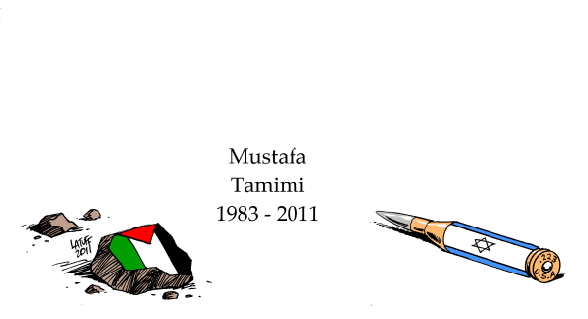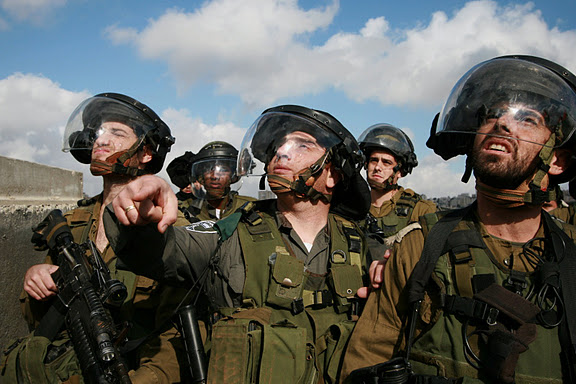-
I was Mustafa Tamimi
by Refaat Alareer 12 December 2011 | In Gaza, My Gaza! Fifteen years ago I was Mustafa Tamimi. Two months before that it was a relative who had his skull smashed by an explosive bullet from an Israeli sniper. Later that same week another neighbor lost his eye. Before and since then, the same situation […]
-
Burin: Youth football surrounded by monuments to Israeli occupation
by Ben Lorber 12 December 2011 | International Solidarity Movement, West Bank On the 7th of December, a windy Wednesday morning behind the boys’ school in the Palestinian village of Burin, 15 teenagers, dressed in red uniform, took to the football field under the coach’s whistle. As the team began its warm-up exercises, another youth […]
-
Qalandia: White sky of tear gas looms over apartheid wall construction
by Rana H. 9 December 2011 | International Solidarity Movement, West Bank Peaceful protesters came face to face with Israeli Occupation Forces (IOF) in Qalandia on Friday before soldiers began to fire tear gas and rubber-coated steel bullets at the civilian group including children, women, and elders. Qalandia village is protesting the construction of the […]
Action Alert An Nabi Saleh Apartheid Wall Arrests BDS Bethlehem Bil'in Cast Lead Demonstration Denial of Entry Ethnic Cleansing Farmers Gaza Global Actions Hebron House Demolition International law Israeli Army Jerusalem Live Ammunition Nablus Ni'lin Prisoner Ramallah Rubber-coated steel bullets Settlement Settlers Settler violence Tear-Gas Canister Video



